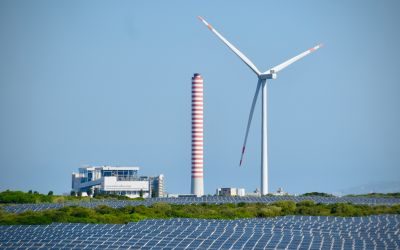Anticipating climate change risks on sovereign bonds, Part 2
Regulators and international institutions require financial risks assessment of climate change, however the practical methodology frameworks available are lacking. This paper provides an innovative and practical methodology that measures the financial impact of climate change risks on sovereign fixed-income assets.

Regulators and international institutions require financial risks assessment of climate change, however the practical methodology frameworks available are lacking. This paper provides an innovative and practical methodology that measures the financial impact of climate change risks on sovereign fixed-income assets.
Learn more about the climate change risks assessed:
- What's the difference between physical and transition risks, and what scenarios are used to assess them?
- What is a "hot house" world scenario? What is a "disorderly transition" scenario? How are these scenarios calculated?
The main findings:
- Physical risks will mainly affect emerging market economies based in areas that are most impacted by climate change, while advanced economies that emit more greenhouse gases and are more carbon-dependent will be mostly affected by transition risks
- The probability of sovereign defaults is likely to increase over time and could undermine the creditworthiness of economies with weak fiscal capacity
- Therefore, sovereign bond yields for these economies could diverge sharply, affecting returns for investors
To read the full research paper click here.
© 2021 London Stock Exchange Group plc (the “LSE Group”). All information is provided for information purposes only. Such information and data is provided “as is” without warranty of any kind. No member of the LSE Group make any claim, prediction, warranty or representation whatsoever, expressly or impliedly, either as to the accuracy, timeliness, completeness, merchantability of any information or of results to be obtained from the use of FTSE Russell products or the fitness or suitability of the FTSE Russell products for any particular purpose to which they might be put. Any representation of historical data accessible through FTSE Russell products is provided for information purposes only and is not a reliable indicator of future performance. No member of the LSE Group provide investment advice and nothing contained in this document or accessible through FTSE Russell products should be taken as constituting financial or investment advice or a financial promotion. Use and distribution of the LSE Group data requires a licence from an LSE Group company and/or their respective licensors.






